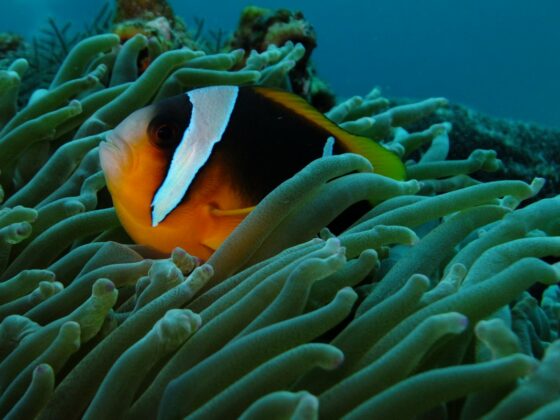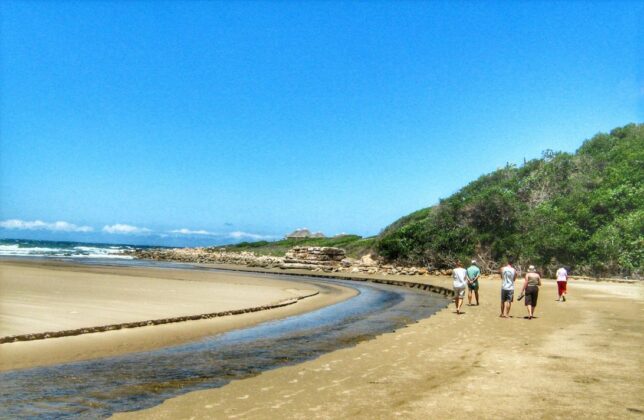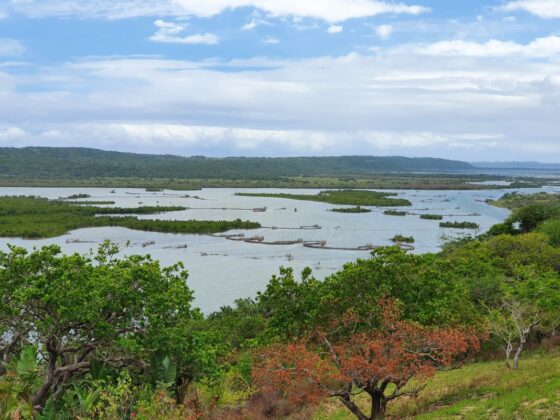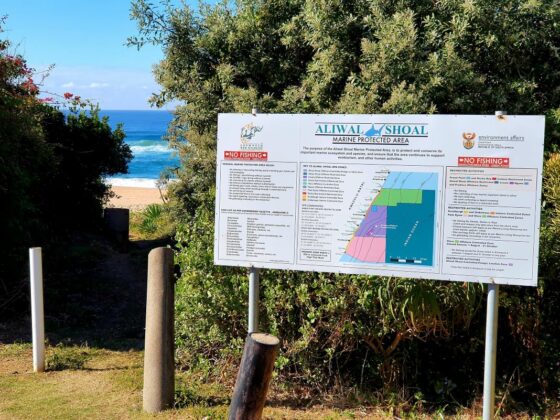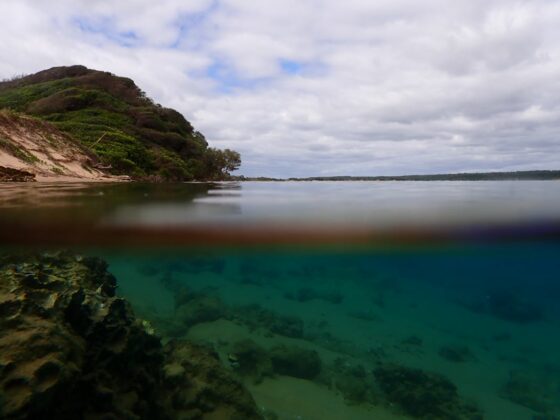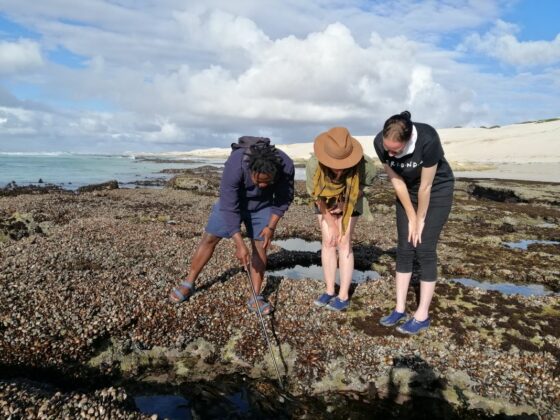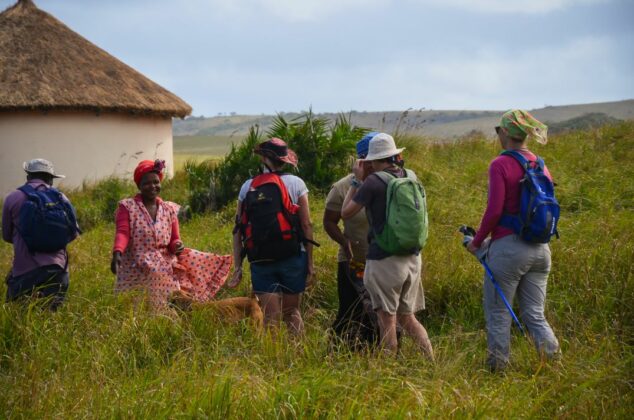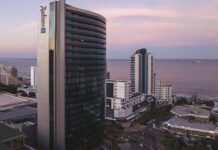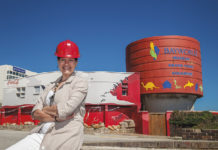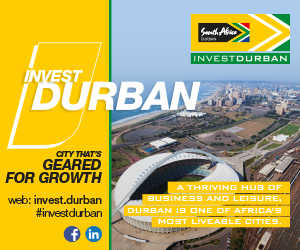
Known as the “game reserves of the sea”, Marine Protected Areas (MPAs) are earning their place in the spotlight as the MPA Day celebration on 1 August went global in 2023. In addition to the many ecological benefits of these protected ocean areas, MPAs bring with them significant tourism potential which aligns with the 2023 World Tourism Day theme, Tourism and Green Investment.
“Tourism is a massive contributor towards our local and global economies and in a country like South Africa, which has 41 MPAs, the potential for ecotourism is just waiting to be unlocked,” says Dr Judy Mann, founder of MPA Day and the Executive of Strategic Projects at the Two Oceans Aquarium Foundation. “By promoting MPA tourism initiatives, we’re able to empower local communities surrounding our MPAs through job creation, while educating and supporting conservation efforts and the advancement of our MPAs.”
The potential of ecotourism around MPAs is already evident with several local establishments welcoming domestic and international visitors who are drawn to the natural beauty of the areas. One such example is in the Western Cape near De Hoop MPA where Morukuru Family De Hoop (Morukuru Beach Lodge and the exclusive-use Morukuru Ocean House) considers the MPA a unique selling point.
“Guests at Morukuru Family De Hoop enjoy the unspoilt coastline, the scenic beauty of the reserve, the fynbos vegetation, as well as the abundant marine life,” explained Rinse Wassenaar, the Marketing Manager. “De Hoop MPA offers some of the best land-based whale watching anywhere in Africa as the whales are not disturbed by boats. Unlike other places, the De Hoop Nature Reserve is not overcrowded and guests at Morukuru Family De Hoop experience the sensation of feeling almost alone.”
From July to October, visitors enjoy land-based whale watching, guided marine walks at low tide, guided fynbos and nature walks, guided nature drives, mountain biking, dune boarding, snorkelling and swimming in tidal pools. Visitors also enjoy sightings of resident turtles, such as the five rehabilitated turtles that were recently released into the reserve by the Two Oceans Aquarium Foundation’s Turtle Conservation Centre.
Morukuru Family De Hoop employs 42 people and welcomes around 1 700 guests every year. The business also supports the MPA further through the Morukuru Goodwill Foundation, as well as sharing educational information via its website and marketing material.
Leveraging attractions
Another Western Cape-based tourism establishment that has leveraged the De Hoop Nature Reserve and MPA for ecotourism is Africansunroad. The company provides nature guides and hikes and wine walks with a special focus on the 55 km Whale Trail which extends through the nature reserve from Potberg to Koppie Alleen.
Gillian Louw, CEO of Africansunroad, says they welcome around 80 tourists a year for the Whale Trail during which time they educate visitors about the MPA and clean any litter along the trail. She says the protection and restoration of this natural environment has attracted significant interest from tourists, with the recovery of ocean life a particularly welcome benefit. Another tourism establishment located near De Hoop MPA is Marine Dynamics which includes Dyer Island Cruises and Marine Dynamics Academy. Marine Dynamics is the founder of the Dyer Island Conservation Trust, African Penguin and Seabird Sanctuary.
While they do not operate in the MPA, they have been campaigning to have the Great Dyer Island area demarcated as an MPA, while always positively promoting the nearby De Hoop MPA. The company hires 130 people and welcomes up to 40 000 visitors a year on their marine adventures which includes viewing the Marine Big 5: sharks, whales, African penguins, seals and dolphins.
The Western Cape’s Pearly’s Restaurant in Langebaan, located near the West Coast National Park, benefits from the MPA’s ecotourism offerings which attract visitors for water sports, birdwatching and to witness the incredible flowers in season. The restaurant employs around 50 people and welcomes around 50 000 patrons annually.

An iconic destination
While Robben Island is internationally renowned for its apartheid-era prison that housed President Nelson Mandela, many don’t realise that the island is also an MPA, a World Heritage Site and home to the third-largest African penguin colony. This makes the Robben Island Museum a big tourism drawcard, from both historical and ecotourism perspectives. Inga Sipuka, Nature Conservator at Robben Island Museum, notes that tourism, research and education are major drawcards for some 300 000 annual visitors: “We focus on the conservation of seabirds including the endangered African penguin, Bank and Cape cormorants.
One of the challenges for the penguin population is food scarcity due to fishing activities that take place in the buffer zone. We have partnered with multiple stakeholders to enforce environmental law around Robben Island waters, including with SANParks and the Department of Environment, Forestry and Fisheries. We are also raising awareness about the importance of MPAs to minimise illegal activities.”
The KZN South Coast is home to three MPAs, one of which is the world-class dive site, Protea Banks. African Dive Adventures is one local tourism establishment that gives up to 1 000 divers a year the chance to experience the incredible marine life at this MPA.
Owner Roland Mauz says that while the term MPA was not widely known, visitors were happy to know they were diving in a “national park” that protects local marine life. He says, however, that more needs to be done to enforce the regulations around MPAs, as there is still illegal fishing and activities taking place that threaten these protected species.
Kingfisher Lakeside Retreat is situated near another KZN South Coast MPA, Trafalgar, which is renowned for its fossil remains found on the beach. This, and the annual Sardine Run, are some of the big drawcards for visitors to the area. Malissa Barnard explains that the resort, which employs five people, is a unique glamping and dam fishing site, with around 450 annual visitors coming to spend time in nature. The resort contributes towards the upkeep of Trafalgar MPA by advertising beach clean-ups while supporting dune rehabilitation by planting indigenous vegetation.
iSimangaliso Wetland Park
Further north in KZN is the UNESCO World Heritage Site and renowned MPA, iSimangaliso Wetland Park, where tourism establishments like Adventure Mania offer scuba diving, snorkelling and boat rides. The company, which hires six to 10 staff depending on the season, welcomes more than 4 000 visitors annually to this globally renowned tourism destination.
The MPA status of iSimangaliso allows them to generate income through tourism and sustainable fishing, with the region providing valuable scientific research. All divers are instructed on the MPA status while being educated to “take only memories and leave only bubbles”. The preservation of this MPA is not only valuable for marine life and angling but has significant spiritual and cultural value for local residents.



